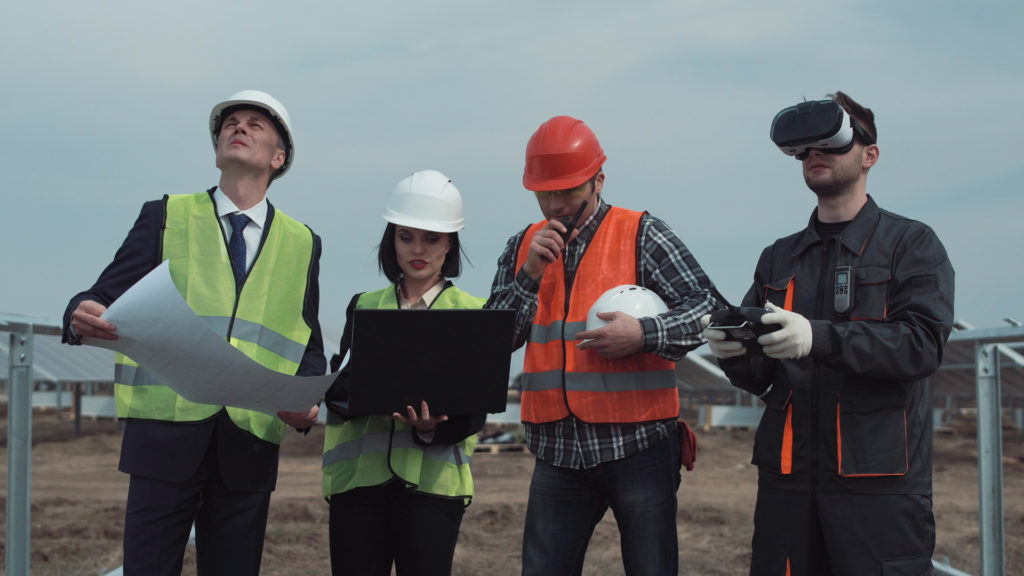Industry has changed dramatically in the last 30 years. The age of technology is finding its feet and the paradigm shift is in full swing. Automation has replaced the jobs of labourers whilst the digital era is creating new jobs. Subsequently, employees are having to learn new skills. Even University leavers typically enter jobs in fields they are theoretically educated in but have no real practical experience. In effect, new employees are not much use to employers.
Companies are obligated to train staff in a real-life environment because they owe a duty of care to their customers. And training staff can be expensive, particularly in industries that have a high turnover of employees. It’s well-known in corporate circles that it costs more to hire employees than it does to retain their services. For enterprises that struggle to retain staff and develop knowledge among their workforce, virtual reality (VR) offers a powerful and cost-effective solution that is measurable. VR works so well because the human brain is designed to absorb and recall visual information.
VR relies on innovative technologies such as headsets, iPads and customised software to create an immersive experience. The end result is more effective yet less expensive than most traditional training methods. Technology, particularly augmented reality (AR) and virtual reality, is creating a paradigm shift in corporate environments. Numerous industries such as healthcare, retail, finance, hospitality and the automative industry are discovering VR provides essential benefits as a training tool.
The benefits of VR as a training tool
Virtual reality provides innovative ways to engage staff. Today’s employees value opportunities to learn about their jobs and grow into a role with the company they choose to work for. Businesses that adopt VR solutions as part of their training package stand out as “Investors in People.” Not only does VR help to attract and retain staff, the technology aids employees in learning their roles quicker.
The power of “doing” has a great impact on the capacity for people to learn. In many cases, VR not only enables employees to gain real-life experience in a training environment, they also have an opportunity to acquire a deeper understanding of the equipment and the process. Here’s a good example of this:
Sliced Bread Animation was acquired to create a VR training video for a medical firm that trains cardiovascular professionals. We created “Virtual Valve” which combines the Oculus Rift headset with motion sensor technology which allows delegates to travel through the aortic arch of the heart. Once inside the heart, students can explore the left ventricle and interact with the software to assess the impact of this condition on patients. Leveraging the learning experience in this way improves knowledge, understanding, and ultimately performance.
VR and AR technologies allow trainees to move beyond basic skill development. The software adds context and relevance to deliver in-depth training experiences. There are a number of ways to use VR to your advantage:
- Mimic real-life situations
- Simplify complex issues
- Create entertaining and enjoyable training environments
- Improve employee engagement
- Appeals to multiple sensory activities (sight, touch, hearing, smell)
- Aids memory recall
VR in corporate learning environments
Companies owe a duty of care to employees and customers. Traditional training standards only provide a partial solution. VR, on the other hand, brings learning to employees and provides them with a risk-free, first-hand experience. For example, manual workers in constructions, oil-rigging, and other high-risk industries that have hostile work environments, can be daunting and dangerous for new starters. VR provides real-life insights and conditions workers without putting them at risk. Pilots and astronauts have used these type of simulation exercises for decades.
Real-life auditions enhance learning and provide valuable experience for trainees. From a business perspective, adopting VR as a training tool enables you to personalise training to your company and measure the effectiveness.
Technology allows trainers to understand what learning is intended to do; develop employees understanding of their role and grow their knowledge to improve productivity and quality. VR software is highly flexible and can be adapted to suit the requirements of numerous industries and individual businesses. Not only that, but companies can leverage data and adjust training programs for the value of end-users – and ultimately the business as a whole.
Now more businesses are adopting VR as part of their training protocol, the cost of purchasing VR is far more cost-effective than it was a few years ago. It is already becoming apparent that VR is the future of corporate training and will replace static learning processes that are difficult to measure.
For more information about how VR can help your corporate training process contact us here.











